本指南介绍了 Fleet Engine 车辆的核心概念及其工作原理。 请务必阅读什么是 Fleet Engine?,并了解 您使用的移动服务:
什么是车辆?
在 Fleet Engine 中,车辆是代表现实生活中的 驾驶员将货物或人员从出发地运输到 目标。
车辆实体是用于实现以下某个目的的机制:
- 管理按需行程,在整个 驾驶员节
- 管理驾驶员在驾驶期间执行的一系列计划任务的计划经停点 。
此处的插图以车载设备对的形式来表示车辆。通过 该假设是驱动程序使用的设备运行您的驱动程序应用。 您的应用全天都会向 Fleet Engine 发送一系列位置信息更新。 司机还会在接受分配之前,使用应用将分配标记为完成 Fleet Engine 会存储这些数据,并且您可以访问 将营业地点信息与商家活动状态相结合 为舰队运营商构建您认为合适的解决方案。
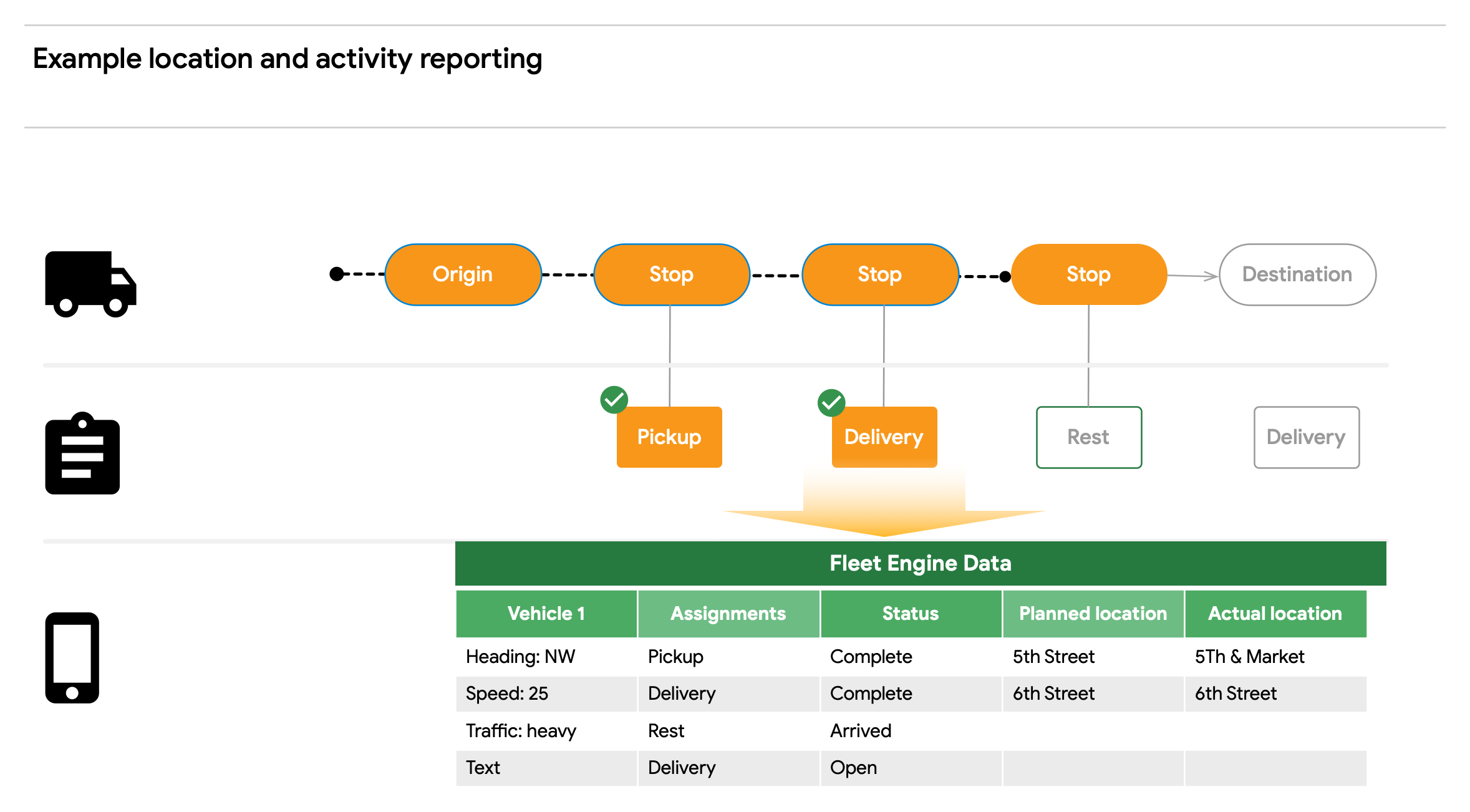
车辆和旅程元素的数据模型
下面的图表展示了
预定经停点的行程为 DeliveryVehicle,按需行程为 Vehicle。
按需行程
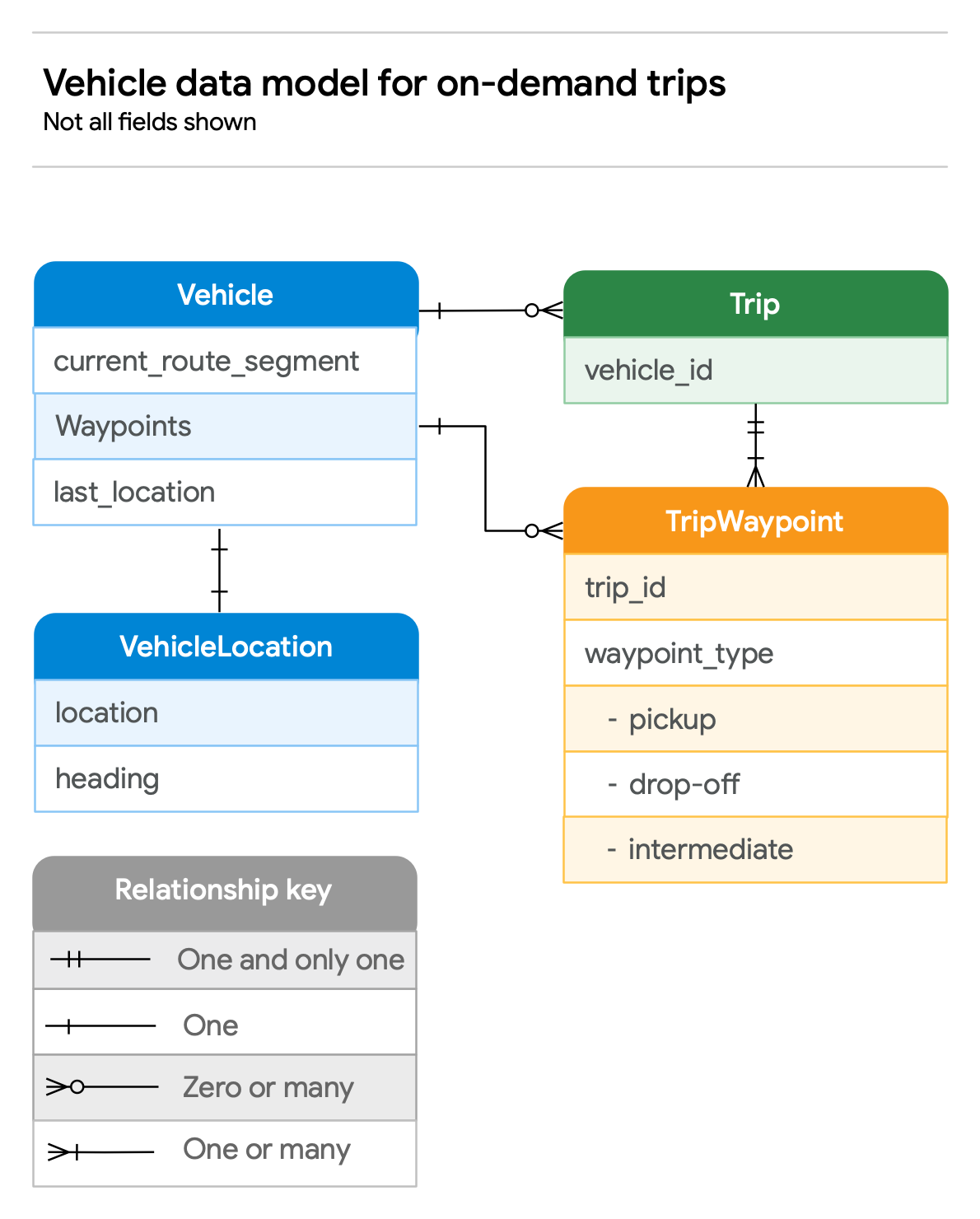
计划任务
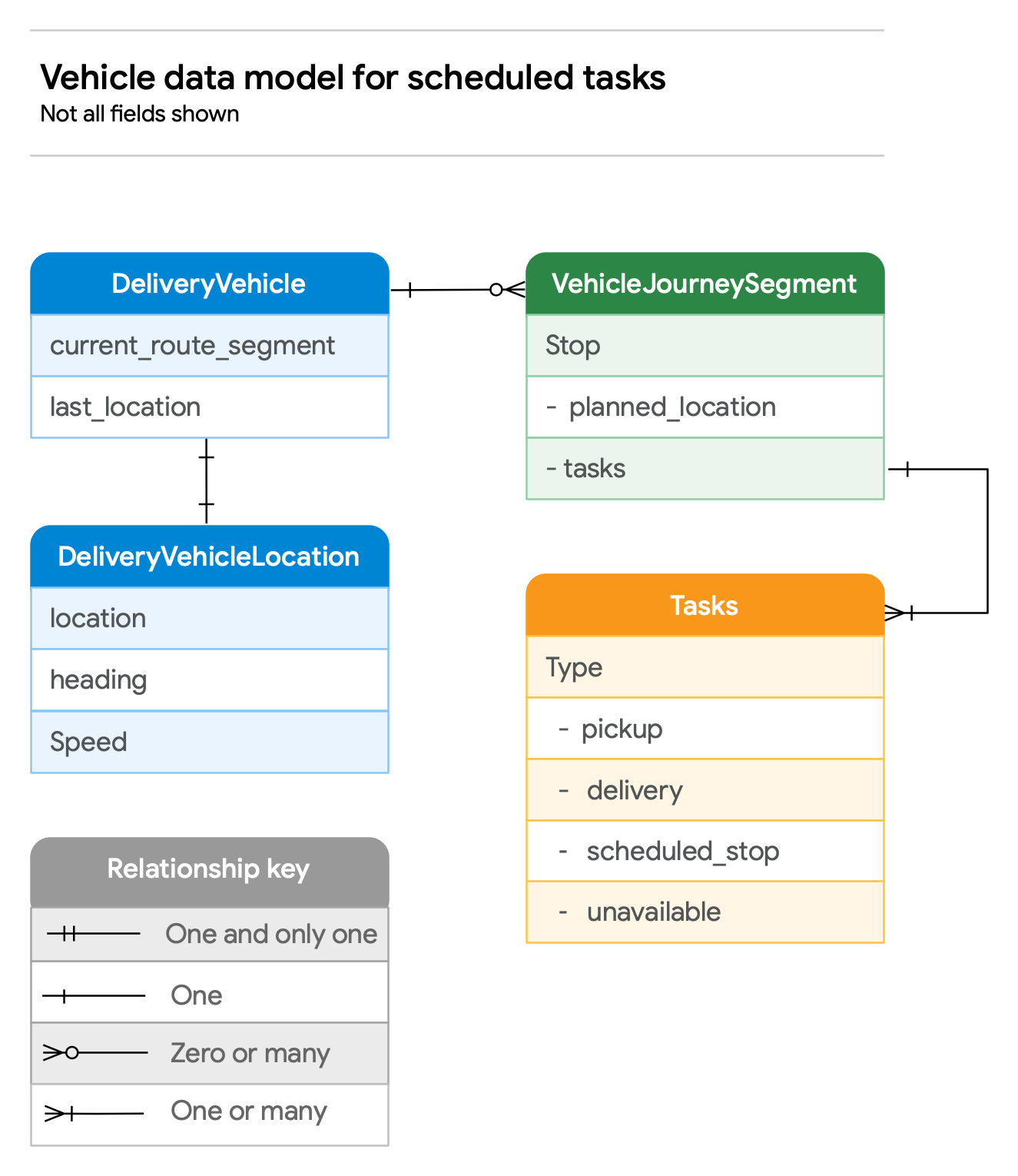
车辆行程
本部分介绍了 Fleet Engine 中行程的概念。在本课中, 行程就是车辆的分配集合 指定工作期限(例如一天)。对于预定的服务,这包括 清单和提交顺序。对于按需结算,这包括 在指定时间段内分配的行程数车辆完成其行程的时间 与“ ”关联的所有经停点已清除。
这些图表展示了车辆行程的示例操作。
按需行程
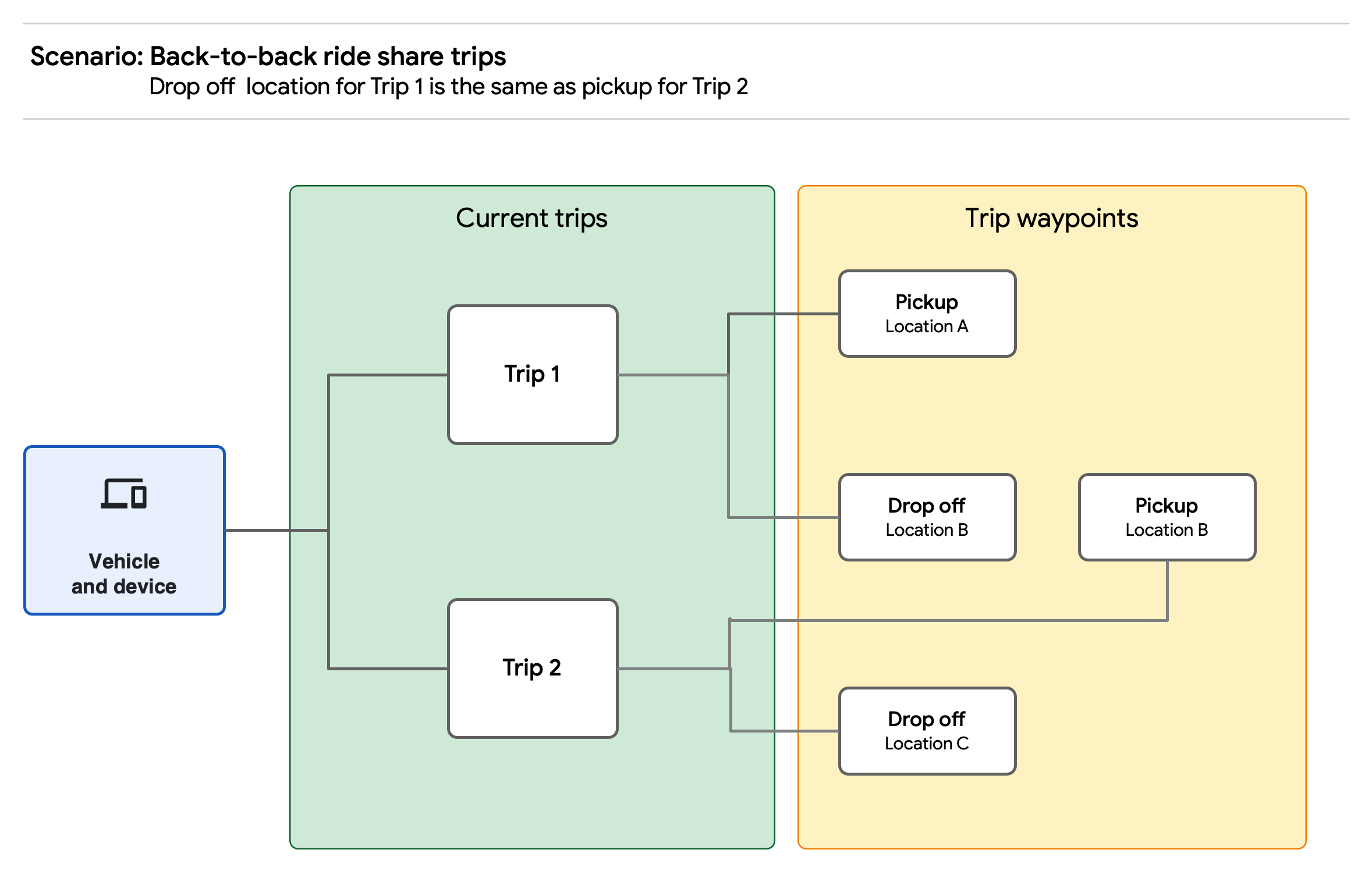
此场景表示一个包含两次行程的行程。
位置。在这里,行程 1 的下车点与上车点相同
行程 2 的地点。
计划任务
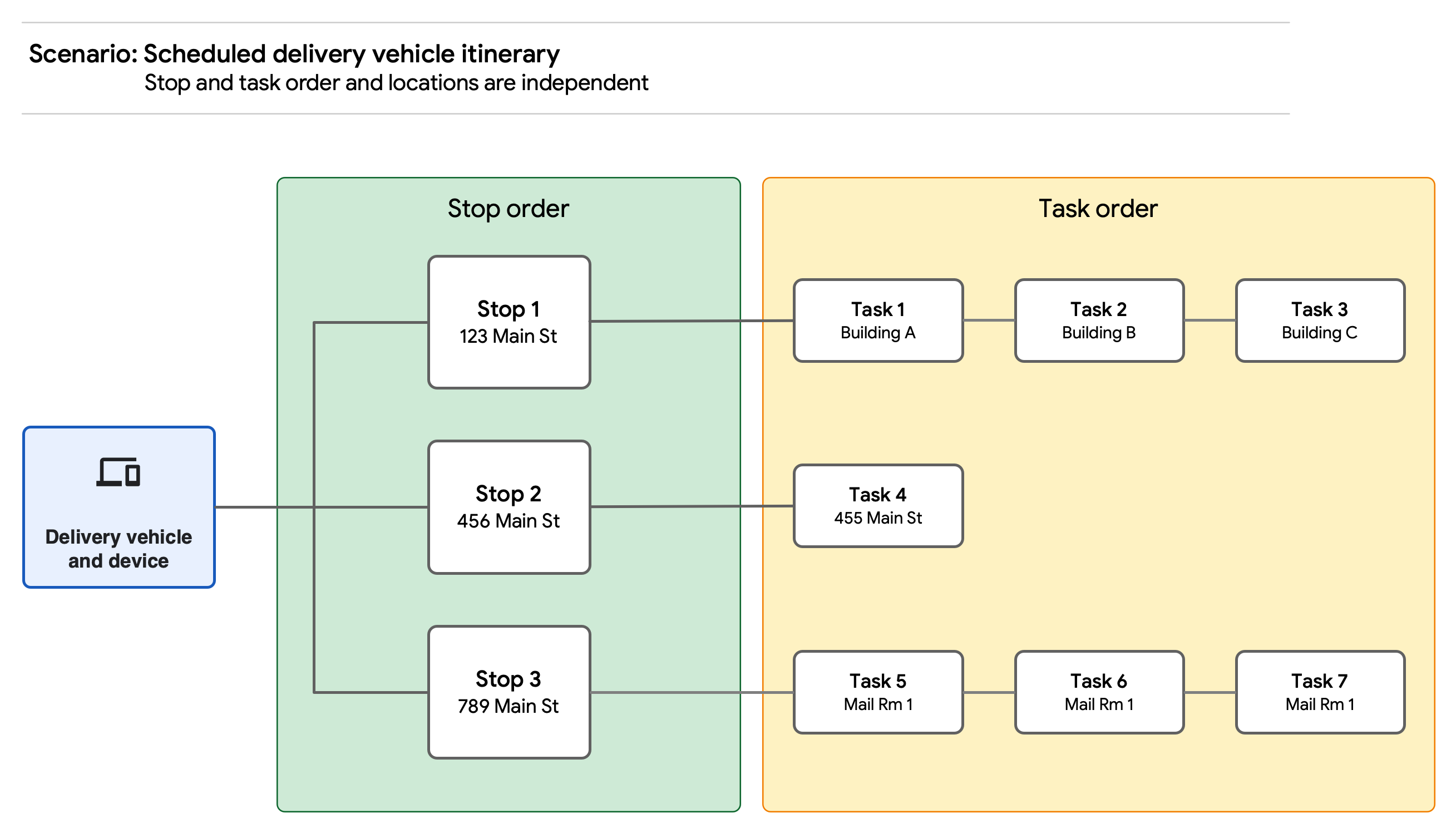
此场景显示了一个包含各种经停点和任务的行程
位置。注意:Fleet Engine 不存储地址信息。
它们在此图中的用法说明了车辆如何停在一个某个位置
与具有单独位置的任务相关联的位置。
车辆位置
在 Fleet Engine 中,车辆位置是指
无论当前是否
到达或离开某个经停点的用户。Fleet Engine 使用 last_location 字段
用于收集近乎实时的位置数据,以及
其他旅行数据,例如方向、速度和海拔。
下表提供了发送位置更新的准则 Fleet Engine:
| 车辆位置 | |||||
|---|---|---|---|---|---|
| 频率 |
建议:使用默认值,该值为
每 10 秒。
如果您更改了位置信息频率更新(不建议),
必须至少每分钟发送一次,且间隔不超过一次
5 秒。
|
||||
| 位置更新方法 |
|
||||
| 说明 |
相关说明:
__更新任务__。
在“管理行程”指南中__更新行程状态__。
|
||||
车辆经停点
车辆停靠点是车辆行程中的关键元素,即整个 车辆从原点到特定分配终止的路线。
在为车辆创建和管理任务或行程分配时,您还可以 这些地理位置将与这些地理位置相关联 具有车辆行程的给定经停点,作为任务或行程活动。
- 对于按需行程,上车点或下车点活动在指定经停点进行 位置,在按需数据模型中称为行程航点。
- 对于计划经停点,停靠站包含要完成的任务的列表 例如,在车辆停靠站时送货和取件, 软件包您还可以在指定的经停点指定安排的休息时间。
通常情况下,司机在 播放队列中的内容届时,您需要将交易状态发送到 Fleet Engine 以便稍后在分析和结算中使用

